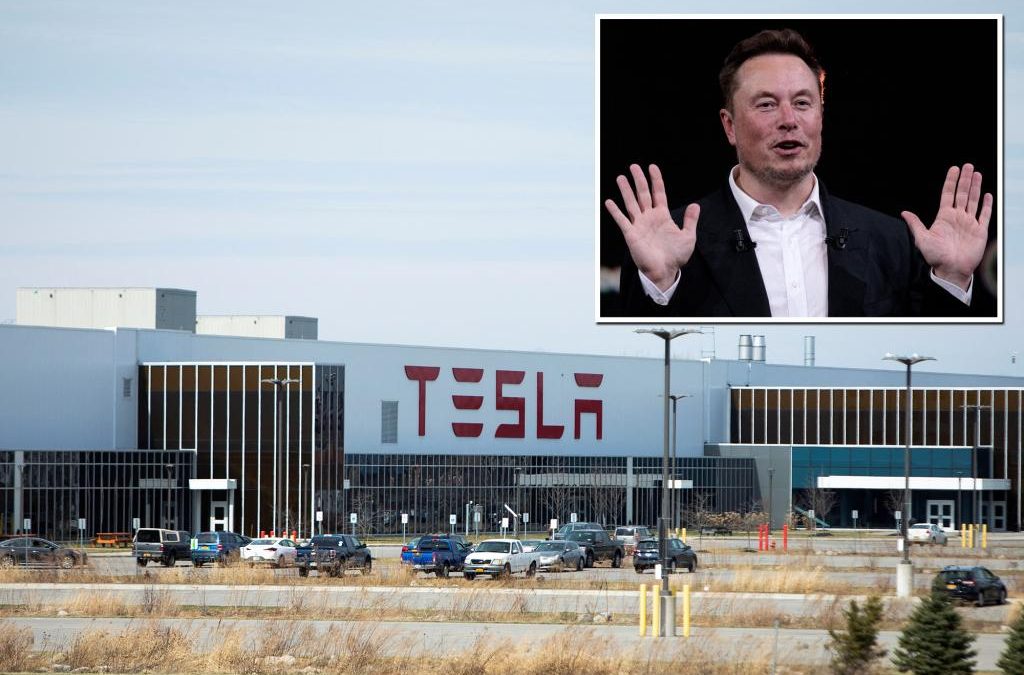New York state has spent nearly $1 billion since 2014 building what Elon Musk envisioned as the largest solar panel factory in the Western Hemisphere — but the deal is proving to be a disastrous boondoggle for taxpayers, according to a report.
The 1.2 million-square-foot, quarter-mile-long “Tesla Gigafactory 2” is located in Buffalo, NY.
The state spent $959 million to build and equip it in one of the most costly ventures of its kind for the Empire State.
When New York’s then-Gov. Andrew Cuomo approved plans for the massive factory in 2013, he touted the project as a linchpin of the “clean energy revolution” that promised “to create 850 permanent jobs and at least 500 construction jobs.”
“You almost have to pinch yourself, right? That this is too good to be true,” Cuomo said at a construction ceremony for the factory in 2015.
Critics say Cuomo was right about the “too good to be true” part.
“It was a bad deal,” state Sen. Sean Ryan — a Democrat who represents Buffalo — told the Wall Street Journal. “A cautionary tale is you can’t give governors too much power to get on the phone with egotistical billionaires.”
The suppliers Cuomo believed would flock to the manufacturing hub never showed up, and most workers who live on site are lower-paid, desk-bound data analysts working on other sectors of Tesla’s business, not its solar panel operation, according to the Journal.
So far, the only new business in the South Park area near the Gigafactory is a Tim Hortons.
The state paid to build and also owns the expensive industrial space, which it equipped with $240 million worth of solar panel manufacturing equipment.
However, Tesla’s cost for leasing the space is just $1 per year.
Musk said the industrial space would churn out enough solar panel shingles to cover 1,000 roofs by 2020, according to the Journal.

The solar energy unit is averaging a dismal 21 installations each week, according to energy analysts at Wood Mackenzie who reviewed the plant’s data, the outlet reported.
In addition, most of the solar panel manufacturing equipment bought by the state has been sold at a discount or thrown out.
The state has agreed to amend the terms of its subsidy a dozen times over the years, including by reducing the number of jobs that must be created in manufacturing as well as shifting deadlines to accommodate the company, according to the Journal.
E.J. McMahon, a research director at government watchdog group Empire Center for Public Policy, noted that the state spent cash to build the factory instead of offering tax abatements that stretch out over years.
“In building and equipping the Tesla solar panel plant, the state became a direct investor in that project under the worst possible terms,” McMahon said.
“In terms of sheer direct cost to taxpayers, this may rank as the single biggest economic development boondoggle in American history.”
Cuomo’s spokesman defended the project to the Journal, saying there are more jobs on the site now than when it was an empty steel mill lot.
Although there are not as many jobs as politicians forecast, according to the Journal, Tesla reported in February that it created 1,700 jobs at the Gigafactory — enough to meet the 1,500 new positions required by the state to avoid a $41.2 million penalty.
However, Tesla’s Gigafactory 2 landing page touts that to date, it has “created nearly 800 jobs.”
According to financial statements for Fort Schulyer — from which Tesla is committed to leasing the facility for $1 per year for 10 years — Tesla reported a 7% drop in sales for its energy generation and storage business, which includes the solar activities, the paper reported.
Fort Schuyler’s financial statements valued the factory and its equipment at $94.8 million in the fiscal year ended June 30, 2018, a steep drop from the $1.2 billion that documents showed it was worth the year prior.
The Post has reached out to Tesla for comment.
Despite the New York-based factory’s shortcomings, Tesla this week reported stronger-than-expected delivery and production numbers, which rose 83% year over year, according to its Q2 report.

Year to date, Tesla’s shares have soared more than 155% to $276.54.
The electric vehicle company’s success more than replenished the $9 billion hit in net worth that Musk took when he purchased Twitter in October for $44 million.
The gains landed the Twitter owner and Tesla and SpaceX CEO in the top spot as the world’s richest person after the first half of 2023.
Musk, 52, boasts a net worth of $244 billion, according to the Bloomberg Billionaires Index.
Source




